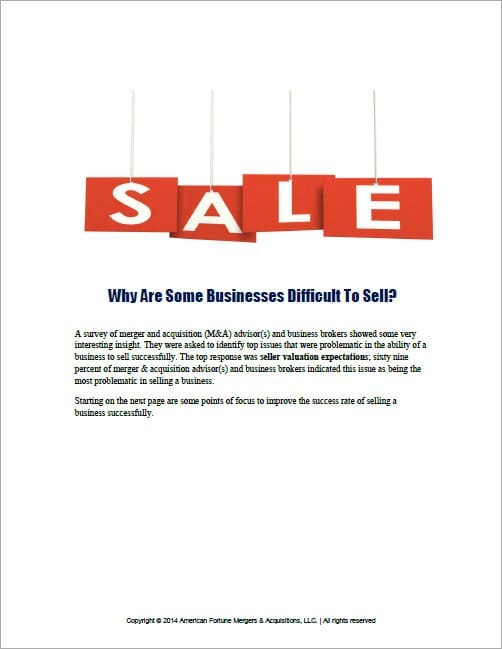 Exit Strategy for Business Owners
Exit Strategy for Business Owners
This article provides some insight and recommendations for “Business Exit Strategy for Business Owners”.
“An estimated $6 trillion of personal wealth will be transferred over the next 10 years consisting primarily of privately held or family owned businesses. Unfortunately most transfers will occur without prior planning.”
Business ownership transfer in a voluntary and non voluntary manner is described as proactive or reactive. The realities are that most business owners do not “formally” plan for ownership transfers; in fact, it’s estimated that 85% of business owners have no exit strategy. The following are some reasons why.
- Emotional Issues – Have not come to grips with “letting go”, plus trying to meet the varying needs, through some level of consensus, amongst other stakeholders (i.e. family, employees, and co-owners).
- One Sided Role – Too busy in the role of manager of the day-to-day operations in “growing the business”, leaving little time to address the dual role as an owner, and the eventual exit from the business.
- Qualified Successor – Difficulty finding a qualified “internal” replacement to both own and run the business, or simply don’t know how to groom one.
- Taxes – Dealing with the fact that most every ownership transfer will be taxed in some way (gift, estate, income).
- Lack of Advice – The business owner’s advisors (CPA, Attorney, etc.) are not addressing this planning activity at a practical and emotional level it demands.
- Changes – Maybe what many business owners, partners and stakeholders fear most is that things will be different. Change is inevitable!
Change/Transformation, be it personal or business, will always cause an ownership transfer. So whether it’s formalized or not, at some point in time, there will be an exit from the business. It’s a matter of choice, as to which of the three phases of change an Exit Plan is implemented.
Phase I Exit Plan – Changes are Anticipated
Because of the lead-time to plan, here’s where the business owner has the most transfer strategy options available. At this “formalized” Exit Strategy Phase, the preferred choices are ranked as follows:
| “Preferred” Transfer To: | Rank |
| Family Member | 50% |
| Employees | 30% |
| Co-owner | 15% |
| Outside Third Party | 5% |
As stated earlier however, 85% of business owners are likely not to initiate a formalized Phase I Exit Plan in order to achieve these transferee objectives.
Phase II Exit Plan – Changes in Progress
Strong “emotions” are being felt at this stage, motivating business owners to seriously consider transferring their ownership interest; hopefully, when the “timing is right”. Here are the changes that are key motivators at this phase:
| Personal Changes | Business Changes |
| Boredom or Burnout | Lack of Capital |
| Desire for Liquidity | No Internal Successor |
| Age or Health | Growth Challenges |
Phase III Exit Plan – Changes have Occurred
Note #1: Business owners do not plan for involuntary or inevitable circumstances.
Note #2: By failing to make the decision to sell when the timing is right, the decision is made for the owner by internal or external forces.
Often the transfer becomes involuntary, when a “Dismal D” event occurs.
| Personal Changes | Business Changes |
| Death | Dissenting Owners |
| Disability | Declining Markets |
| Divorce | Debt Overload |
Statistics show that when an ownership transfer “actually” takes place, not 5%, but 70% of the time there is a third party sale. Therefore, business owners generally operate under Phase II or a Phase III Exit Plan.
In any event, a qualified Business Intermediary or Business Advisor, specializing in business transfers, can assist business owners with an Exit Plan – no matter which phase they are in. If you want to be proactive and begin “Business Exit Strategy for Business Owners” speak with one American Fortune’s Advisors by calling 502-244-0480.
Posted by Brian S. Mazar, CBI, MBA
American Fortune






